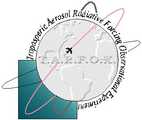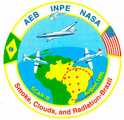Instrument
University of Washington-Georgia Tech Lidar
University of Washington-Georgia Tech Lidar
The University of Washington-Georgia Tech Lidar System is an airborne lidar system that uses a downward-pointing, neodymium-doped yttrium aluminum garnet (Nd-YAG) laser. It was designed by Georgia Tech to be mounted on the University of Washington C-131A research aircraft. It is frequency doubled to operate at both 532 nm and 1064 nm wavelengths, allowing it to measure lidar backscatter to retrieve profiles of aerosol optical properties. It has a pulse repetition rate of 10 Hz and a digitization rate of 25 or 50 ns, providing a vertical resolution of 7.5 and 15 meters, respectively. Its horizontal resolution ranges from 40 to 80 meters.

Instrument Details
- Lidar
- Earth Science > Spectral/engineering > Lidar > Lidar BackscatterEarth Science > Atmosphere > Aerosols > Aerosol ExtinctionEarth Science > Spectral/engineering > LidarEarth Science > Atmosphere > AerosolsEarth Science > Atmosphere > Aerosols > Aerosol Optical Depth/thicknessEarth Science > Atmosphere > Aerosols > Aerosol Backscatter
- Full Column Profile
- N/A
- Vertical: 7.5 m, 15 m, Horizontal: 40-80 m
- 563.5 THz, 281.8 THz
- Currently unavailble
Currently unavailable
Currently unavailable
Georgia Tech
Currently unavailable
Currently unavailable
Unpublished
C-131A Convair C-131 Samaritan 5 Campaigns · 32 Instruments |  Tropospheric Aerosol Radiative Forcing Observational Experiment 1996 Western Atlantic Ocean, US Eastern Seaboard 1 Deployment · 5 Data Products
 Smoke/Sulfates, Clouds, and Radiation 1993—1995 Mid-Atlantic, Pacific Northwest, Central Brazil 3 Deployments · 6 Data Products
|
Filter data products from this instrument by specific campaigns, platforms, or formats.